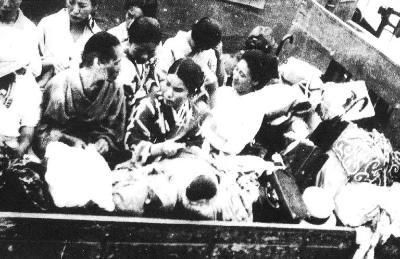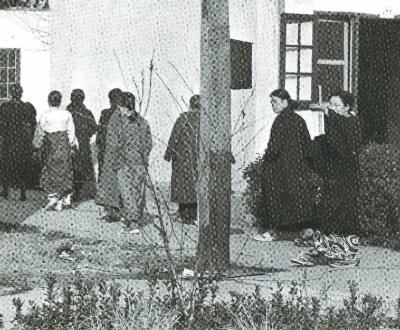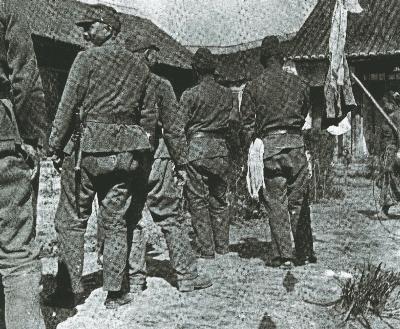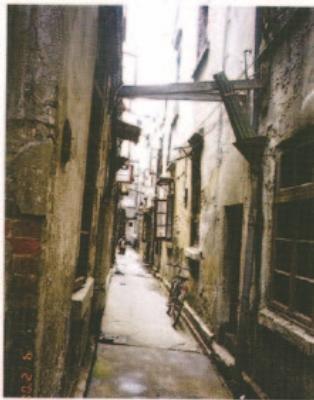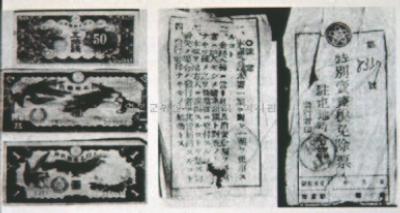- Comfort Women
- The truth of the Japanese Military "Comfort Women"
Comfort Women
Table of Contents Open Contents
4. “Just prostitutes”?
A key fallacy about the “comfort women” system is that it was a form of “licensed prostitution.” Some people have repeatedly stressed that “comfort women” were voluntarily engaged in sexual intercourse for money, as is seen in a recent Newsweek article contributed by one of Japan’s right-wingers, who called the women “prostitutes.”
Because the “comfort women” system was modeled on the licensed prostitution system, there could be some similarities in format between the two systems. Yet, while the state was solely in charge of regulation of the licensed prostitution system, the military and the government played a major role in operating the “comfort women” system. It either operated brothels directly or controlled /supervised contracted civilians, who were required to submit daily or monthly reports. Recruitment of the women was performed by brokers who worked in close coordination with local police and military police. The Japanese armed forces provided all necessary transportation for the women, such as space aboard military trucks, trains and warships.
Furthermore, the women’s freedom was severely restricted in the “comfort stations.” Recruited in many cases through abduction, deceit and intimidation, the women were confined to the “comfort stations,” where they were deprived of freedom and forcibly raped by Japanese soldiers against their will. It is acknowledged in the CRS Memorandum of 2007 that the sexual intercourse was not voluntary and widespread rape had been committed. The women had no free choice of where to live or freedom of movement. Nor did they have the liberty of quitting, a key point of differentiation from licensed prostitutes. The “comfort women” were maintained specifically for the benefit of soldiers, and the women were even abandoned on the battlefield.
The “comfort women” system was for a military purpose, whereas licensed prostitution was commercial. While Japan insists that the system was established to prevent the rape of local women, they do acknowledge that the comfort women were considered a tool for the successful conduct of the war.
“Comfort women” were not the same as “licensed prostitutes,” but instead were victims of a state-run system of sexual violence. Yet the day has yet to come when the Japanese government formally acknowledges its responsibility and offers a sincere apology and reasonable individual compensation to the victims.
Three types of military “comfort station”
There were three types of “comfort stations” varying by operation: brothels operated directly by the military; brothels managed by civilians who had been selected and licensed by the military, and these brothels were also controlled and supervised by the military; existing local brothels designated as institutions for Japanese soldiers for a certain period of time. The second type was the one most referenced in Korean victims’ testimonies and seems to have been the most common
Dutch woman’s testimony
As a victim of the system, Jan Ruff-O'Herne testified before the U.S. House of Representatives, "Many stories have been told about the horrors, brutalities, suffering and starvation of Dutch women in Japanese prison camps. But one story was never told, the most shameful story of the worst human rights abuse committed by the Japanese during World War II: The story of the “Comfort Women”, the jugun ianfu, and how these women were forcibly seized against their will, to provide sexual services for the Japanese Imperial Army. In the so-called “Comfort Station” I was systematically beaten and raped day and night. Even the Japanese doctor raped me each time he visited the brothel to examine us for venereal disease."— Statement of Jan Ruff-O’Herne, Subcommittee on Asia, Pacific and the Global Environment, Committee on Foreign Affairs, United States House of Representatives







